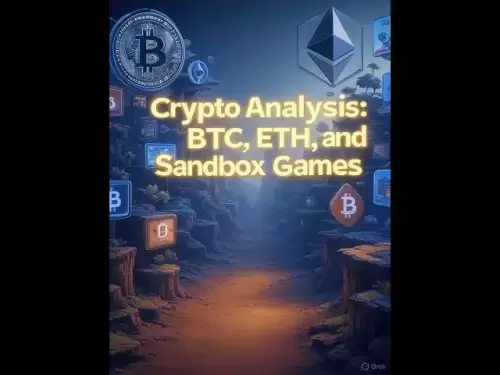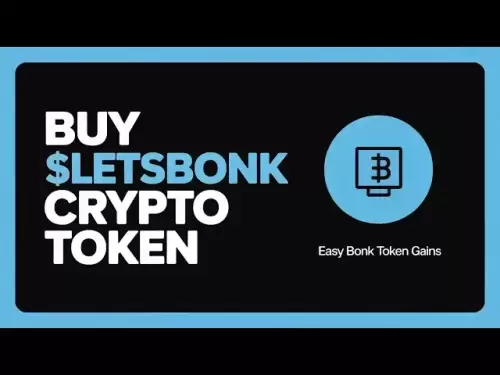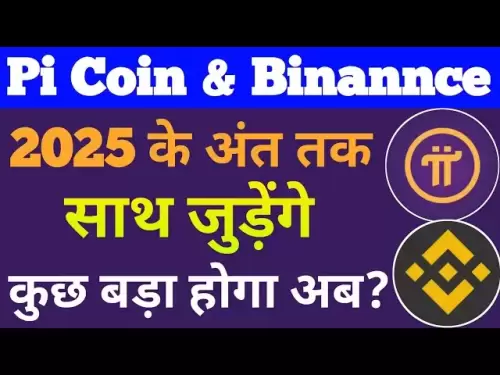-
 Bitcoin
Bitcoin $120400
1.77% -
 Ethereum
Ethereum $3615
7.90% -
 XRP
XRP $3.580
17.84% -
 Tether USDt
Tether USDt $1.001
0.06% -
 BNB
BNB $729.4
1.25% -
 Solana
Solana $179.9
5.04% -
 USDC
USDC $0.0000
0.01% -
 Dogecoin
Dogecoin $0.2311
8.22% -
 TRON
TRON $0.3226
4.04% -
 Cardano
Cardano $0.8490
12.85% -
 Hyperliquid
Hyperliquid $46.45
0.72% -
 Stellar
Stellar $0.4913
8.54% -
 Sui
Sui $4.027
2.00% -
 Chainlink
Chainlink $18.51
11.67% -
 Hedera
Hedera $0.2818
21.51% -
 Avalanche
Avalanche $24.03
7.40% -
 Bitcoin Cash
Bitcoin Cash $508.5
2.90% -
 Shiba Inu
Shiba Inu $0.00001496
3.24% -
 UNUS SED LEO
UNUS SED LEO $8.961
1.83% -
 Toncoin
Toncoin $3.264
3.13% -
 Litecoin
Litecoin $104.6
8.15% -
 Polkadot
Polkadot $4.389
6.11% -
 Uniswap
Uniswap $9.924
10.63% -
 Monero
Monero $337.9
0.49% -
 Pepe
Pepe $0.00001376
2.79% -
 Bitget Token
Bitget Token $4.830
2.46% -
 Ethena USDe
Ethena USDe $1.001
0.05% -
 Dai
Dai $1.000
0.02% -
 Aave
Aave $325.2
1.66% -
 Bittensor
Bittensor $423.7
-0.85%
What impact does the Layer 2 solution have on Ethereum transaction speed and fees?
Layer 2 solutions, such as state channels, rollups, and sidechains, augment Ethereum's scalability by offloading transactions off-chain, yielding faster speeds and lower fees.
Feb 25, 2025 at 01:25 am
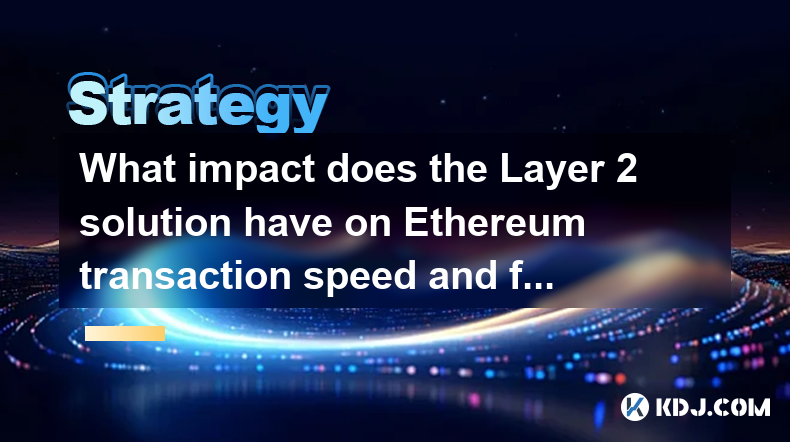
Key Points:
- Explanation of Layer 2 solutions and their advantages over Ethereum's base layer
- Detailed description of various Layer 2 implementations and their respective capabilities
- Analysis of Ethereum's scalability roadmap and the role of Layer 2 solutions in achieving its goals
- Exploration of potential challenges and limitations associated with Layer 2 technology
- Discussion of the impact of Layer 2 solutions on Ethereum's transaction speed, fees, and overall transaction dynamics
What are Layer 2 Solutions and How Do They Work?
Layer 2 solutions are protocols and technologies that operate on top of the Ethereum blockchain, aiming to improve its scalability and transaction speed. They offer a way to process transactions off-chain, reducing the load on the main Ethereum network and enabling considerably faster and cheaper transactions. By leveraging different scaling techniques such as state channels, rollups, and sidechains, Layer 2 solutions offer a crucial mechanism to address Ethereum's scalability challenges.
Types of Layer 2 Solutions
- State Channels: State channels open a direct payment channel between two parties. All transactions conducted within this channel remain off-chain, and only the final balance is recorded on the main Ethereum blockchain, minimizing network congestion and transaction fees.
- Rollups: Rollups bundle a batch of transactions together and generate a compressed transaction, which is then submitted to the Ethereum blockchain. Rollups employ various techniques to reduce transaction data size, such as optimistic rollups, zero-knowledge rollups, and validium rollups.
- Sidechains: Sidechains operate as parallel blockchains that run alongside the main Ethereum blockchain. They enable transactions to be processed independently while maintaining a link to the original chain. Sidechains operate independently but are secured by the underlying Ethereum blockchain.
Ethereum Scalability Roadmap and the Role of Layer 2 Solutions
Ethereum's scalability roadmap heavily emphasizes Layer 2 solutions as a cornerstone for achieving its high transaction throughput goals. The development of improved Layer 2 protocols, such as rollups and optimistic rollups, is integral to the overall scalability strategy. With Layer 2 solutions handling a significant volume of transactions off-chain, Ethereum's main blockchain can focus on securing the most important data and coordinating the network, leading to increased scalability and efficiency.
Challenges and Limitations of Layer 2 Technology
One potential limitation of Layer 2 solutions is the complexity of operating and using them. They often involve technical intricacies and complexities that may require users to possess specific knowledge and understanding. Additionally, ensuring security and preventing malicious activity is essential to maintain the integrity of Layer 2 systems.
Another challenge lies in achieving seamless interoperability between different Layer 2 implementations. As various Layer 2 solutions emerge, it becomes vital to establish clear and secure communication standards among them. This interoperability fosters a cohesive ecosystem and enables users to leverage multiple Layer 2 solutions for their specific needs.
Impact of Layer 2 Solutions on Ethereum's Transaction Speed and Fees
The adoption of Layer 2 solutions has significantly improved Ethereum's transaction speed and reduced fees. By efficiently handling transactions off-chain, Layer 2 solutions have alleviated network congestion and reduced the average transaction time. Moreover, by reducing the computational load on the main Ethereum network, Layer 2 technology has helped contain gas fees, making transactions more affordable for users.
FAQs:
1. What are the advantages of using Layer 2 solutions over Ethereum's base layer?
Layer 2 solutions offer several advantages over Ethereum's base layer:
- Faster transaction speed: Transactions processed off-chain can finalize within seconds or minutes, significantly reducing confirmation times compared to the main Ethereum network.
- Lower transaction fees: The off-chain nature of Layer 2 solutions removes the competitive fee market on Ethereum's base layer, resulting in much lower transaction fees.
- Increased scalability: By shifting transaction load off-chain, Layer 2 solutions alleviate network congestion, enabling Ethereum to handle higher transaction volumes.
2. Are Layer 2 solutions fully decentralized?
While Layer 2 solutions operate independently of Ethereum's base layer, their security ultimately relies on the underlying Ethereum network. If the main Ethereum blockchain ceases to exist, Layer 2 solutions would also cease to function. However, within their specific contexts, many Layer 2 solutions maintain their decentralization by using consensus mechanisms and community governance models.
3. How do Layer 2 solutions handle smart contracts?
Smart contract execution in Layer 2 solutions varies depending on their specific implementation.
- State channels: Smart contracts are executed off-chain and broadcast on the Ethereum blockchain only to update the final state.
- Rollups: Rollups bundle smart contract interactions into a single transaction, which is then compressed and submitted to the base layer for verification.
- Sidechains: Sidechains have their own smart contract platforms, and their execution environment may slightly differ from Ethereum's base layer.
4. What is the current ecosystem of Layer 2 solutions, and which are the most popular ones?
The Layer 2 solution ecosystem is constantly evolving, with new projects emerging regularly. Currently, some of the most popular and well-established Layer 2 solutions include:
- Optimistic Rollups: Optimism, Arbitrum
- Zero-Knowledge Rollups: zkSync, Immutable X
- Validium Rollups: StarkNet, Polygon Hermez
- State Channels: Celer Network, Raiden Network
- Sidechains: Polygon PoS, Gnosis Chain
5. What are some of the potential risks and challenges associated with Layer 2 solutions?
While Layer 2 solutions offer advantages, they also come with certain potential risks and challenges:
- Technical complexity: The technical setup and use of Layer 2 solutions can be complex, requiring users to navigate different protocols and interfaces.
- Security risks: Layer 2 solutions introduce new points of vulnerability and attack vectors, emphasizing the need for robust security measures to protect user funds.
- Centralization risks: Some Layer 2 solutions may involve a degree of centralization, with certain entities having greater control over the network's operation, which can potentially compromise its decentralized nature.
Disclaimer:info@kdj.com
The information provided is not trading advice. kdj.com does not assume any responsibility for any investments made based on the information provided in this article. Cryptocurrencies are highly volatile and it is highly recommended that you invest with caution after thorough research!
If you believe that the content used on this website infringes your copyright, please contact us immediately (info@kdj.com) and we will delete it promptly.
- Giants Protocol's G Token Live Launch: What You Need to Know
- 2025-07-18 21:30:13
- Solana, Rollblock, and the Gaming Token Revolution: What's Hot Now?
- 2025-07-18 22:10:13
- Crypto 2025: Will the Bull Run Be Led by Ethereum?
- 2025-07-18 22:10:13
- XRP, Dogecoin, and Crypto Bills: What's Shaking in the Crypto World?
- 2025-07-18 20:50:13
- Trump, Family Business, and Power: A New Era of Conflicts?
- 2025-07-18 20:30:12
- Trump, Business, & Bitcoin: A Crypto Capitalist's Vision
- 2025-07-18 20:40:12
Related knowledge

How to avoid common crypto investment mistakes?
Jul 13,2025 at 01:35am
Understanding the Risks of Crypto InvestmentInvesting in cryptocurrency can be highly rewarding, but it also comes with significant risks. One of the ...

What is a long-short crypto strategy?
Jul 15,2025 at 10:56am
Understanding the Basics of a Long-Short Crypto StrategyA long-short crypto strategy is an investment approach where traders simultaneously take long ...

What is a long-short crypto strategy?
Jul 11,2025 at 01:28pm
Understanding the Basics of Long-Short Crypto StrategyA long-short crypto strategy is an investment approach where traders take both long and short po...

How to use the RSI indicator for crypto?
Jul 12,2025 at 03:56pm
Understanding the RSI Indicator in Cryptocurrency TradingThe Relative Strength Index (RSI) is a momentum oscillator used to measure the speed and chan...

Is copy trading a good strategy for crypto beginners?
Jul 12,2025 at 08:28am
Understanding Copy Trading in the Cryptocurrency MarketCopy trading is a strategy where novice traders replicate the trades of experienced investors a...
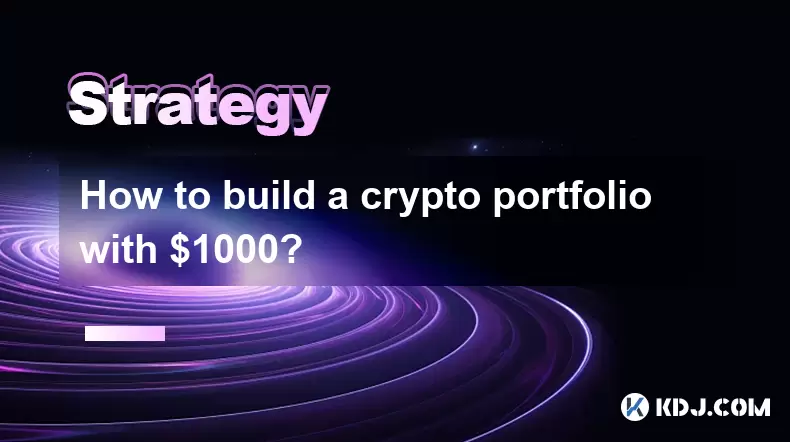
How to build a crypto portfolio with $1000?
Jul 13,2025 at 08:14pm
Understanding the Basics of Cryptocurrency InvestmentBuilding a crypto portfolio with $1000 starts with understanding the fundamentals of cryptocurren...

How to avoid common crypto investment mistakes?
Jul 13,2025 at 01:35am
Understanding the Risks of Crypto InvestmentInvesting in cryptocurrency can be highly rewarding, but it also comes with significant risks. One of the ...

What is a long-short crypto strategy?
Jul 15,2025 at 10:56am
Understanding the Basics of a Long-Short Crypto StrategyA long-short crypto strategy is an investment approach where traders simultaneously take long ...

What is a long-short crypto strategy?
Jul 11,2025 at 01:28pm
Understanding the Basics of Long-Short Crypto StrategyA long-short crypto strategy is an investment approach where traders take both long and short po...

How to use the RSI indicator for crypto?
Jul 12,2025 at 03:56pm
Understanding the RSI Indicator in Cryptocurrency TradingThe Relative Strength Index (RSI) is a momentum oscillator used to measure the speed and chan...

Is copy trading a good strategy for crypto beginners?
Jul 12,2025 at 08:28am
Understanding Copy Trading in the Cryptocurrency MarketCopy trading is a strategy where novice traders replicate the trades of experienced investors a...

How to build a crypto portfolio with $1000?
Jul 13,2025 at 08:14pm
Understanding the Basics of Cryptocurrency InvestmentBuilding a crypto portfolio with $1000 starts with understanding the fundamentals of cryptocurren...
See all articles
























